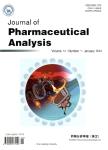Simultaneous determination of amino acids in different teas using supercritical fluid chromatography coupled with single quadrupole mass spectrometry
Simultaneous determination of amino acids in different teas using supercritical fluid chromatography coupled with single quadrupole mass spectrometry作者机构:Institute of Pharmaceutical Analysis College of Pharmacy Jinan University Guangzhou 510632 China Shenzhen Institute for Drug Control Shenzhen China Department of Pharmaceutics State Key Laboratory of Natural Medicines China Pharmaceutical University Nanjing China Laboratory for the Analysis of Medicine Department of Pharmaceutical Sciences CIRM University of Liege CHU B36 B-4000 Liege Belgium
出 版 物:《Journal of Pharmaceutical Analysis》 (药物分析学报(英文版))
年 卷 期:2019年第9卷第4期
页 面:254-258页
核心收录:
学科分类:0710[理学-生物学] 1007[医学-药学(可授医学、理学学位)] 1002[医学-临床医学] 0817[工学-化学工程与技术] 0703[理学-化学] 0702[理学-物理学] 10[医学]
基 金:the financial support from China Postdoctoral Science Foundation(2018M643205)
主 题:Amino acids Teas Supercritical fluid chromatography with single quadrupole mass spectrometry (SFCMS)
摘 要:Tea is a widely consumed beverage and has many important physiological properties and potential health benefits. In this study, a novel method based on supercritical fluid chromatography coupled with mass spectrometry (SFC-MS) was developed to simultaneously determine 11 amino acids in different types of tea (green teas, Oolong tea, black tea and Pu-erh tea). The separation conditions for the analysis of the selected amino acids including the column type, temperature and backpressure as well as the type of additive, were carefully optimized. The best separation of the 11 amino acids was obtained by adding water (5%, v/v) and trifluoroacetic acid (0.4%, v/v) to the organic modifier (methanol). Finally, the developed SFC-MS method was fully validated and successfully applied to the determination of these amino acids in six different tea samples. Good linearity (r ≥ 0.993), precision (RSDs≤ 2.99%), accuracy (91.95%-107.09%) as well as good sample stability were observed. The limits of detection ranged from 1.42 to 14.69 ng/mL, while the limits of quantification were between 4.53 and 47.0 ng/mL. The results indicate that the contents of the 11 amino acids in the six different tea samples are greatly influenced by the degree of fermentation. The proposed SFC-MS method shows a great potential for further investigation of tea varieties.



